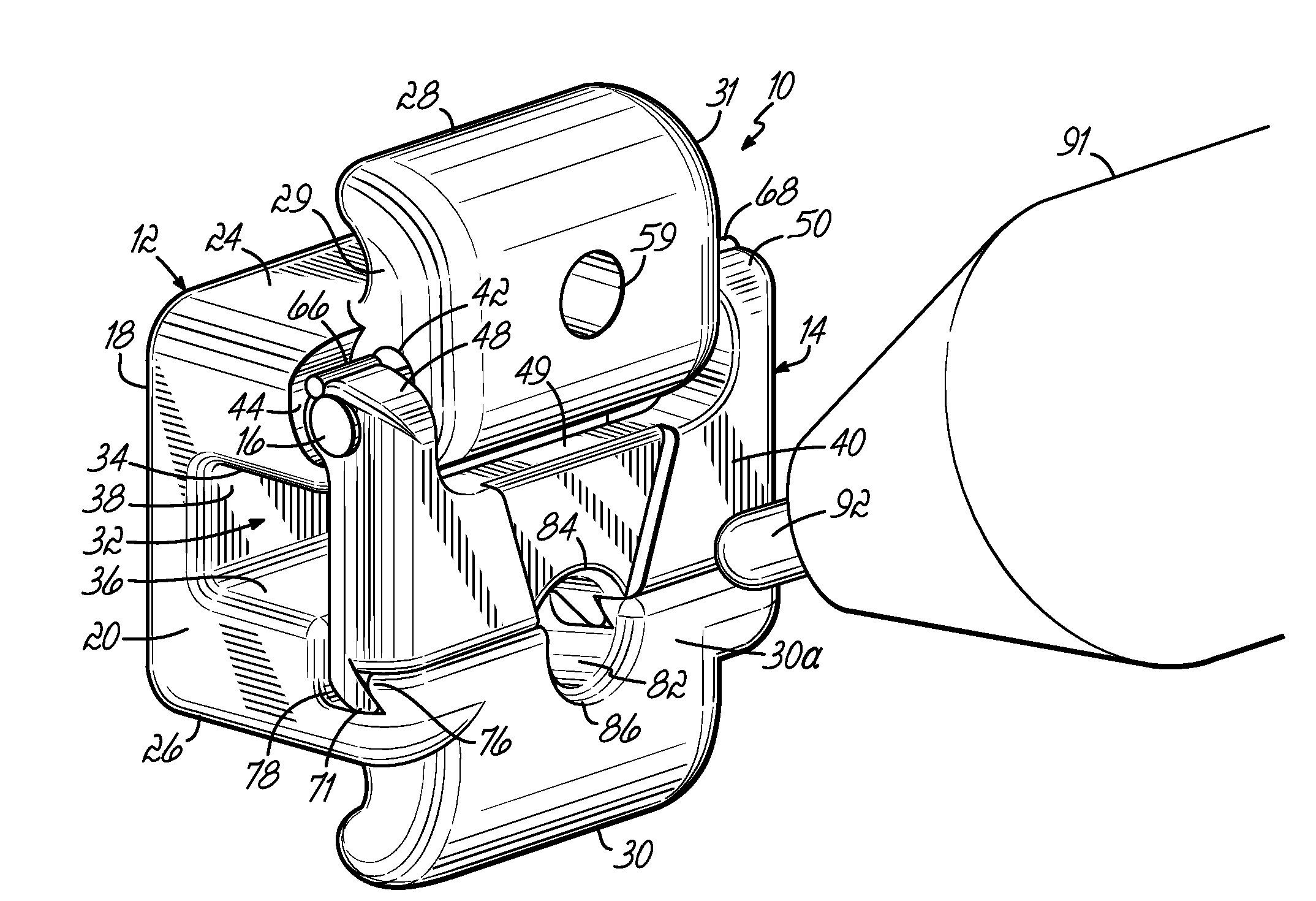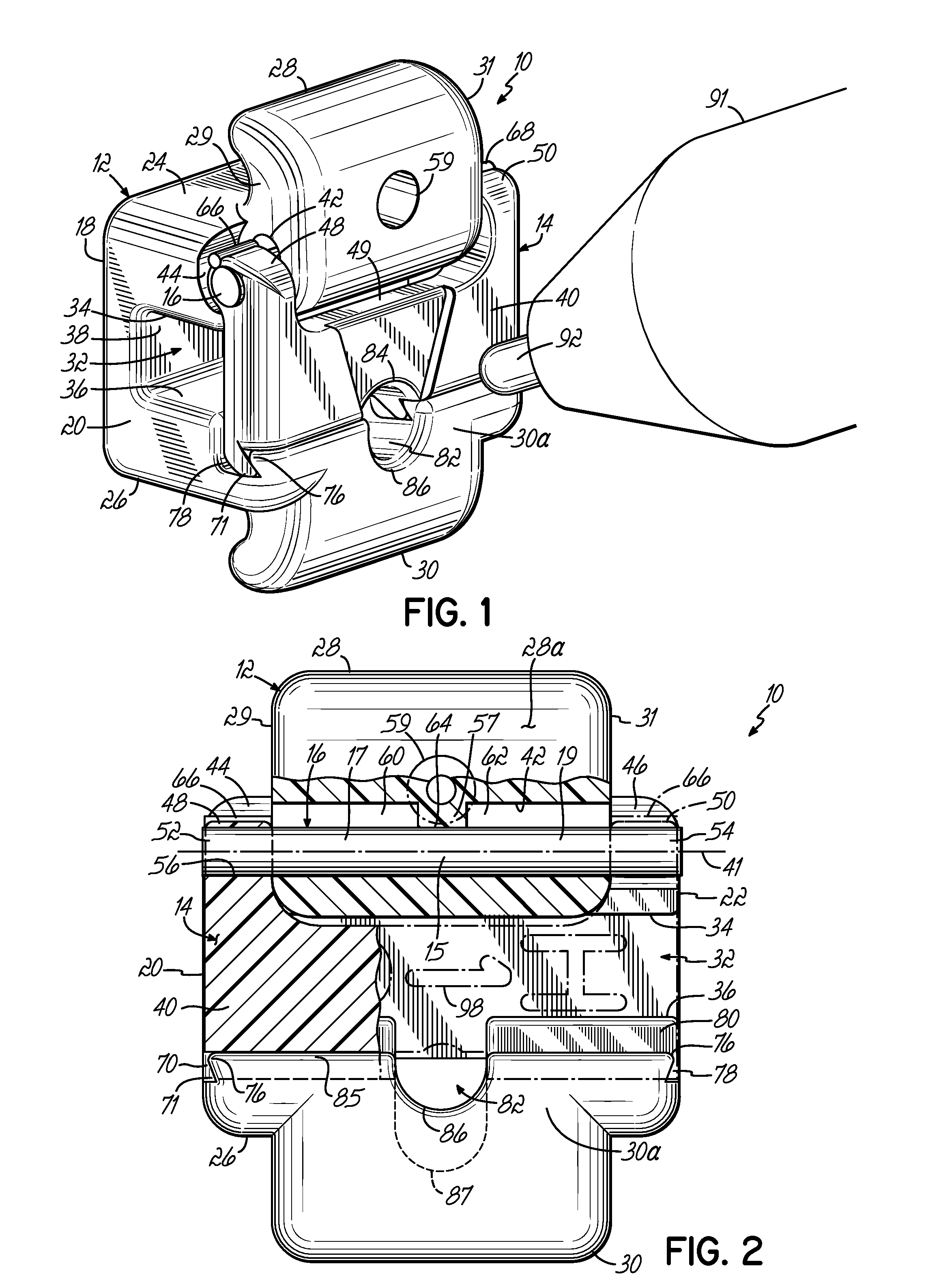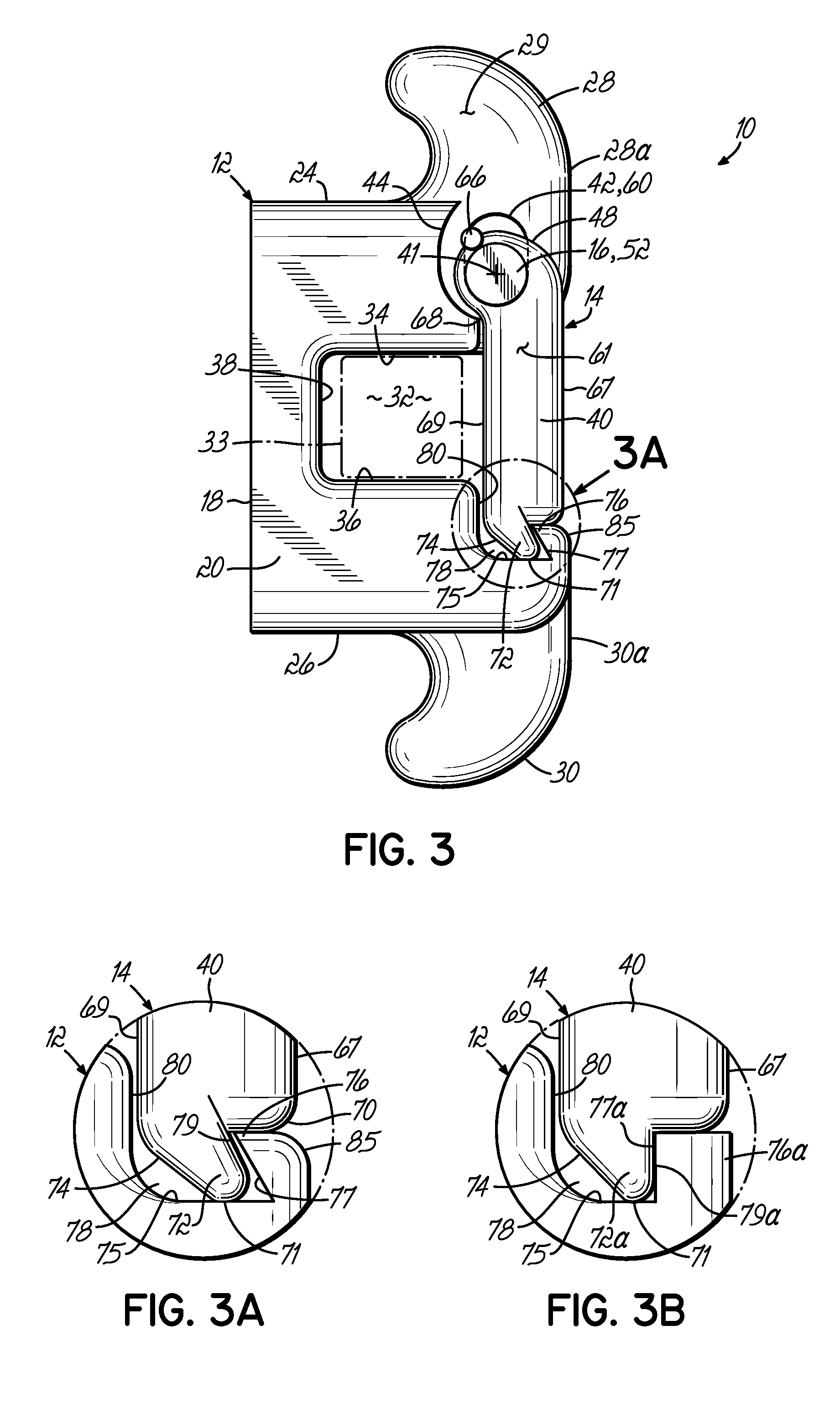Low profile self-ligating orthodontic brackets and methods of using such orthodontic brackets
- Summary
- Abstract
- Description
- Claims
- Application Information
AI Technical Summary
Benefits of technology
Problems solved by technology
Method used
Image
Examples
Embodiment Construction
[0027]With reference to FIGS. 1-5, an orthodontic bracket, generally indicated by reference numeral 10, for use in corrective orthodontic treatments generally includes a bracket body 12, a latching member 14, and a hinge pin 16 that couples the latching member 14 with the bracket body 12. The latching member 14 is hinged to the bracket body 12 by the hinge pin 16, which defines a shaft that allows the latching member 14 to swivel or pivot for moving the latching member 14 between an opened position (FIGS. 5, 6) and a closed position (FIG. 1). The angular range of pivoting movement of latching member 14 relative to the bracket body 12 may be less than 180° when the latching member 14 moves between the opened and closed positions. Portions of the hinge pin 16 also flex relative to the bracket body 12, as described below, to permit the latching member 14 to be locked with the bracket body 12 as the latching member 14 approaches the closed position and to be unlocked to release the latc...
PUM
 Login to View More
Login to View More Abstract
Description
Claims
Application Information
 Login to View More
Login to View More - R&D
- Intellectual Property
- Life Sciences
- Materials
- Tech Scout
- Unparalleled Data Quality
- Higher Quality Content
- 60% Fewer Hallucinations
Browse by: Latest US Patents, China's latest patents, Technical Efficacy Thesaurus, Application Domain, Technology Topic, Popular Technical Reports.
© 2025 PatSnap. All rights reserved.Legal|Privacy policy|Modern Slavery Act Transparency Statement|Sitemap|About US| Contact US: help@patsnap.com



